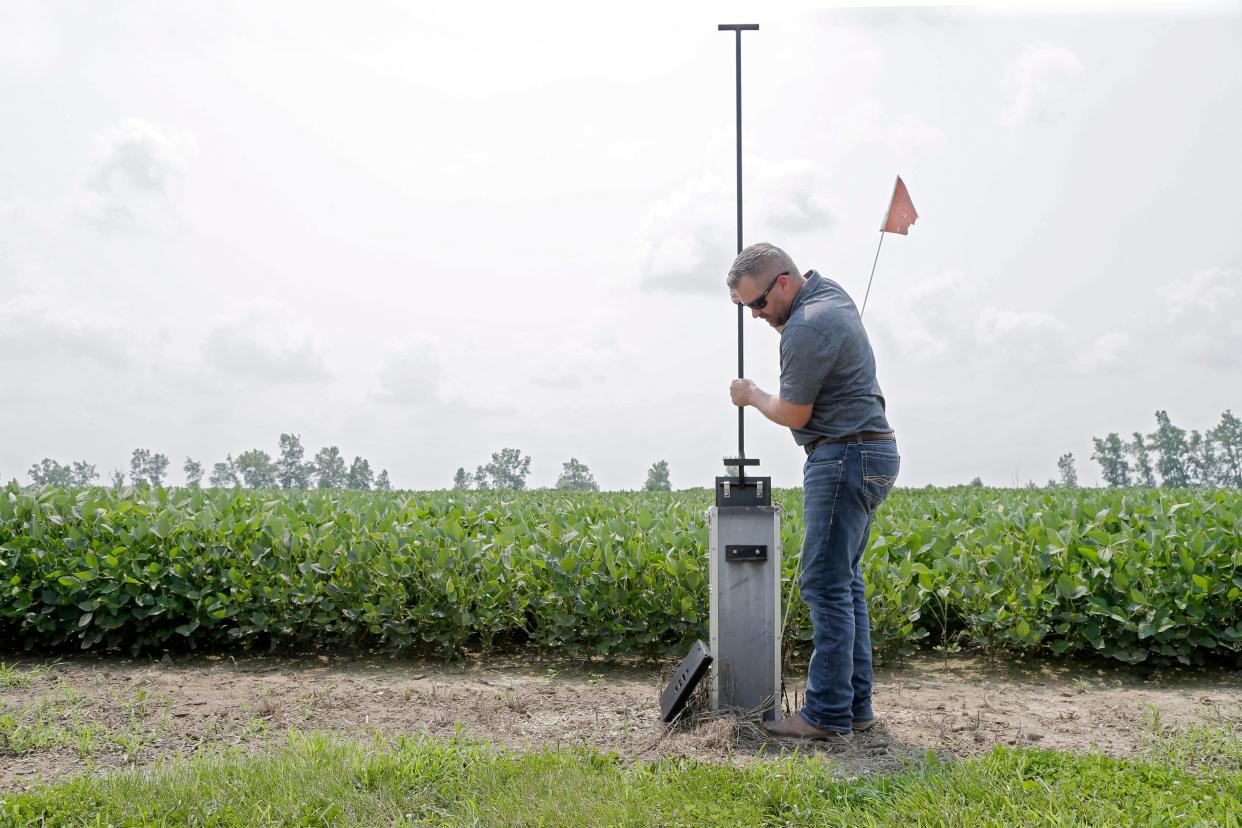Researcher says simple fix could help farmers retain water and nutrients, but few are using it

Few farmers have installed a control system to manage water discharged from underground pipes, even though it could benefit their bottom line and the environment, according to research underway at South Dakota State University.
“Drain tile” is the common name for perforated pipes that many farmers bury under their fields to remove excess water. John McMaine, an SDSU water management engineer, said there’s a simple way to manage drain tile outflow that only a small percentage of farmers use.
“It would probably be fewer than 10 percent,” McMaine said.
Conventional “free-draining” systems remove excess water to the depth of the underground pipes. “Controlled drainage” increases water retention in the soil by using a structure — sometimes specially designed boxes, and sometimes as simple as wooden boards manually stacked up — to raise the depth of drainage outlets, operating like spillways. The system helps to hold back more moisture in a field during periods when drainage is not needed, like a drought.
Climate change is increasing the number of severe flooding and drought events in the state, according to SDSU Extension State Climatologist Laura Edwards.
And when big rains come, farms are losing fertilizers like nitrogen – and money – by not using a system to manage discharged water. That can also contribute to soil erosion and loss of soil fertility. In addition, the discharge of excess water and nutrients into nearby rivers and streams causes water pollution.
“We see less nitrate leaving with controlled drainage by, usually, between 40 and 50%,” McMaine said.
While farmers can benefit financially from controlling their tile drain discharge, McMaine said most need to be made aware of how simple implementing a system can be.
“Especially in a dry year, it would be nice to have the ability to turn my tile off, but they don’t know that’s something they don’t have to develop on their own,” McMaine said. “There are commercially available options to do that.”
And managing tile drainage may become even easier. McMaine and fellow researchers hope to design software that would automatically raise or lower the height of the “spillways” based on soil conditions, without farmers having to do it manually.
“Phase two is to start to develop that technology,” McMaine said. “Remote control structures will be installed, and we’ll develop the algorithms to make them truly automated.”
This article originally appeared on Sioux Falls Argus Leader: Researcher says simple fix could help farmers retain water and nutrients, but few are using it

